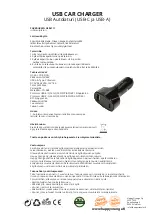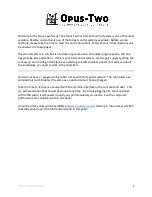
Physical Pendulum Accessory
Model No. ME-9858
10
®
Also, recheck what the car does after the collision. If the car is moving at all, you don't
have the mass correct; go back and adjust the mass.
2.Measure the speed of the car.
If using photogates, start measuring the speed for each trial, so that when you do get the
pendulum to stop at the top, you can use the value as the speed (v
o
) of the car. Otherwise,
calculate the theoretical speed using the change in height.
Calculations
1.Using equation (1), calculate the distance
.
2.Calculate the rotational inertia of the pendulum (I) using equation #4.
3.Initial angular speed ( ) of the pendulum:
Because there is very little friction, we can assume conservation of energy as the pendulum
swings up to its stopped position at the top. Thus, the pendulum's total energy at the bottom
(only rotational KE) is equal to its total energy at the top (only PE).
Using equations #8 and #9,
and solving for the angular speed,
.
Using your values, calculate the initial angular speed, .
4. Angular momentum before and after the collision
Using equation #5, calculate the angular momentum before the collision.
Using equation #6, calculate the resulting angular momentum of the pendulum.
How do these two values compare? Calculate the percent difference between them. What
are the sources of error? Did the momentum of the system really change?
5. Kinetic energy before and after the collision:
Using equation #7, calculate the initial KE
o
of the car.
x=
l
-d
2
1
ω
1
2
---
I
ω
2
2M
g
x
=
ω
4Mgx
I
---------------
·
=
ω
L
o
=m
o
v
o
r
L
I
ω
=
KE
o
1
2
---
m
o
v
o
2
=
Содержание ME-9858
Страница 1: ...Instruction Manual Manual No 012 08581A Physical Pendulum Accessory Model No ME 9858...
Страница 2: ......































